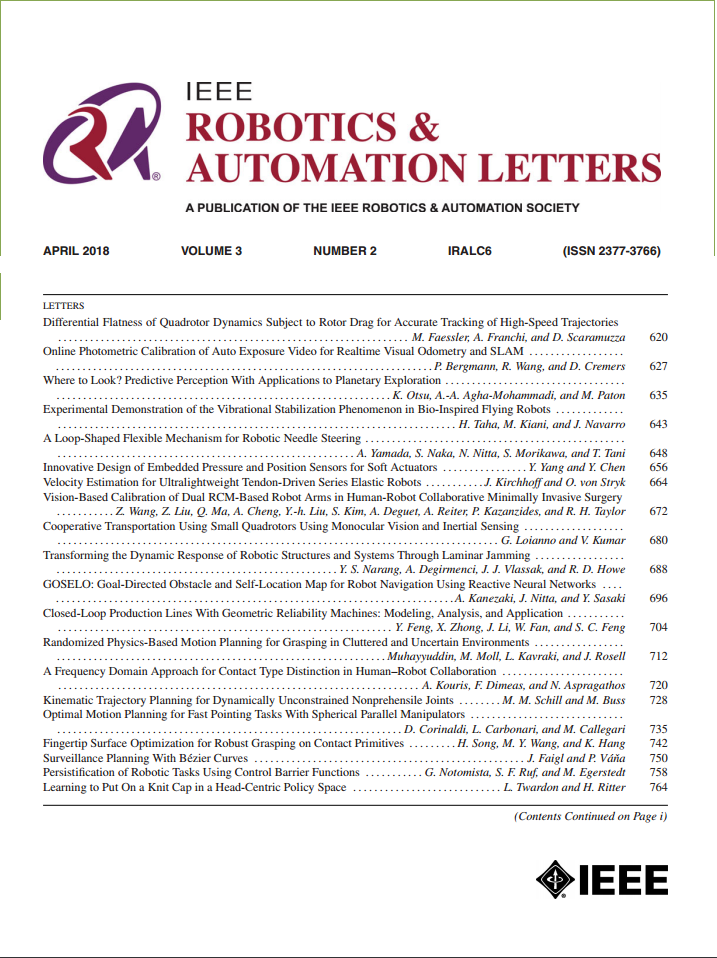EV-TTC:弱光条件下基于事件的碰撞时间
IF 4.6
2区 计算机科学
Q2 ROBOTICS
引用次数: 0
摘要
对于基于事件的相机系统来说,在资源受限的低光环境下快速准确地估计密集碰撞时间(TTC)是一个挑战。像体素网格这样的固定时间事件表示面临着固有的权衡:较大的时间窗口提高了感知准确性,但增加了存储需求,而较小的窗口以准确性为代价减少了存储。我们提出了一个针对移动机器人设计的硬件感知TTC估计系统,满足严格的带宽、计算和存储要求。我们的核心创新是一种时间尺度分离方法,用于计算多时间尺度事件表示,在每秒7500万事件(MEPS)下实现3.3 ms的延迟。作为本研究的一部分,我们开发了一个新的高时间分辨率TTC数据集,使用高清事件相机,其时间估计至少是现有事件数据集(如MVSEC, DSEC和VECtor)的7倍。我们的方法优于现有的方法,与体素网格相比,在$T^{2}CEF$上将平均帧中位数TTC误差降低了至少20%,并且在多个数据集上比其他基线平均提高了31%。我们的系统在Jetson Orin NX上实时运行,在141 Hz下只有9.5 ms的延迟,优于嵌入式硬件上的所有其他方法,使其成为移动机器人的理想选择。本文章由计算机程序翻译,如有差异,请以英文原文为准。
EV-TTC: Event-Based Time to Collision Under Low Light Conditions
Rapid and accurate dense time-to-collision (TTC) estimation in resource-constrained, low-light environments is challenging for event-based camera systems. Fixed-time event representations like voxel grids face an inherent trade-off: larger temporal windows improve perception accuracy but increase storage demands, while smaller windows reduce storage at the cost of accuracy. We present a hardware-aware TTC estimation system designed for mobile robots, satisfying strict bandwidth, computation, and storage requirements. Our core innovation is a time-scale separation method for computing a multi-temporal scale event representation, achieving a latency of 3.3 ms at 75 Million Events per Second (MEPS). As part of this study, we developed Time-To-Collision/Event Flow ($T^{2}CEF$ $T^{2}CEF$
求助全文
通过发布文献求助,成功后即可免费获取论文全文。
去求助
来源期刊

IEEE Robotics and Automation Letters
Computer Science-Computer Science Applications
CiteScore
9.60
自引率
15.40%
发文量
1428
期刊介绍:
The scope of this journal is to publish peer-reviewed articles that provide a timely and concise account of innovative research ideas and application results, reporting significant theoretical findings and application case studies in areas of robotics and automation.
 求助内容:
求助内容: 应助结果提醒方式:
应助结果提醒方式:


